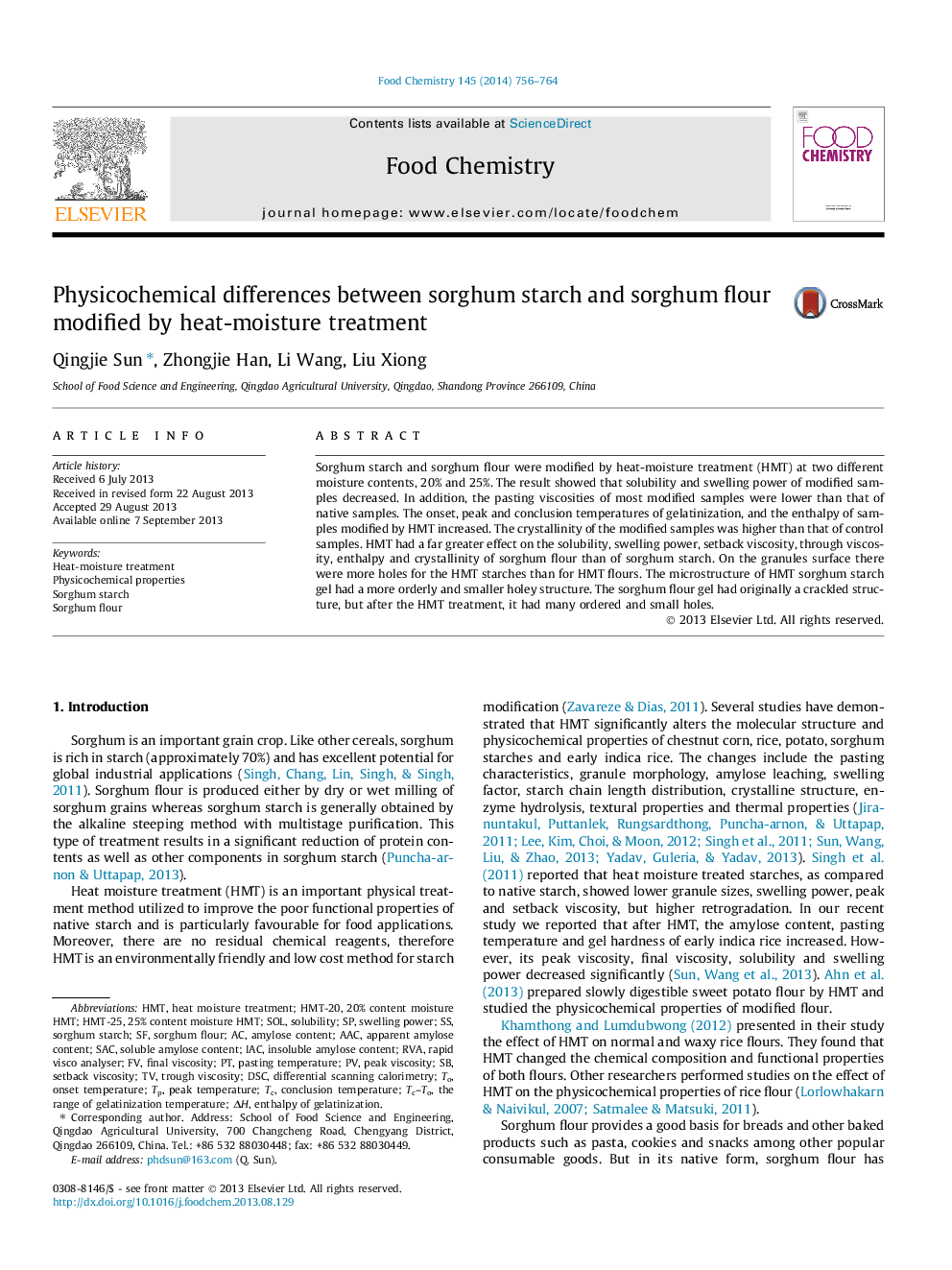| Article ID | Journal | Published Year | Pages | File Type |
|---|---|---|---|---|
| 7600985 | Food Chemistry | 2014 | 9 Pages |
Abstract
Sorghum starch and sorghum flour were modified by heat-moisture treatment (HMT) at two different moisture contents, 20% and 25%. The result showed that solubility and swelling power of modified samples decreased. In addition, the pasting viscosities of most modified samples were lower than that of native samples. The onset, peak and conclusion temperatures of gelatinization, and the enthalpy of samples modified by HMT increased. The crystallinity of the modified samples was higher than that of control samples. HMT had a far greater effect on the solubility, swelling power, setback viscosity, through viscosity, enthalpy and crystallinity of sorghum flour than of sorghum starch. On the granules surface there were more holes for the HMT starches than for HMT flours. The microstructure of HMT sorghum starch gel had a more orderly and smaller holey structure. The sorghum flour gel had originally a crackled structure, but after the HMT treatment, it had many ordered and small holes.
Keywords
DSCEnthalpy of gelatinizationΔHhMTIACSACAACRVASorghum flourSolubilityPhysicochemical propertiesHeat-moisture treatmentHeat moisture treatmentOnset temperaturePeak temperatureRapid Visco AnalyserSolSwelling powerAmylose contentapparent amylose contentconclusion temperatureSorghum starchpeak viscosityfinal viscositypasting temperatureSetback viscosityDifferential scanning calorimetry
Related Topics
Physical Sciences and Engineering
Chemistry
Analytical Chemistry
Authors
Qingjie Sun, Zhongjie Han, Li Wang, Liu Xiong,
